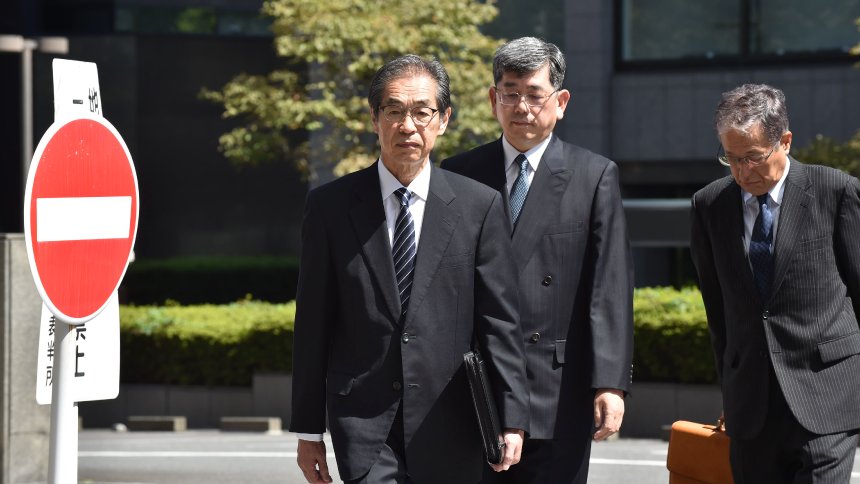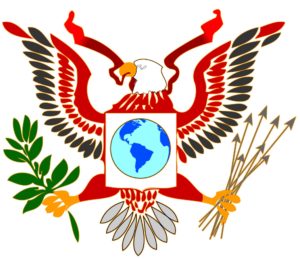Nepal struggles to rebuild one month after earthquake
One month after an earthquake devastated Nepal, and with the June monsoon fast approaching, thousands are still living in temporary shelters. In Nepal, thousands of people who lost their homes one month ago in the 7.8-magnitude earthquake are bracing for the coming monsoon.
Huddled in a Kathmandu monastery, Nima Lama clutches his prayer beads and thinks of the family he lost when his home was destroyed by a torrent of ice and rock one month ago.
His wife and parents were among the hundreds killed when the picturesque Langtang valley — home to a trekking village with the same name — was hit by a huge avalanche triggered when a massive 7.8-magnitude earthquake struck Nepal on April 25.
"It felt like a bomb had exploded, I hid behind a boulder as rocks fell everywhere," the 35-year-old trekking guide told AFP in the monastery, as monks chanted prayers for the dead.
More than 8,600 people have lost their lives since the earthquake hit Nepal last month, followed by another on May 12, destroying nearly half a million houses and leaving thousands without food or water.
The government estimates the disaster has already cost the impoverished country around $10 billion — half its annual GDP — and with the vital tourist industry now crippled, experts fear it will struggle to rebuild.
The avalanche destroyed access to the popular Langtang trekking route that once helped hundreds of villagers earn their livelihood and enabled Lama to build two thriving teahouses, both now destroyed.
View galleryA Nepalese child and young Buddhist monk are seen at …
A Nepalese child and young Buddhist monk are seen at a camp for earthquake survivors in Kathmandu (A …
It turned a valley renowned for its beauty into a desolate graveyard, showering the village with rocks and ice and stripping bark from surrounding trees.
Frantic with worry, Lama joined soldiers and other villagers as they dug through the debris to find survivors and recover the bodies of loved ones.
"It was like someone swept it up with a large broom. As I walked back I couldn\’t tell where I was, everything was buried," said Lama, who only survived as he was in a nearby hamlet on the day of the earthquake.
Security forces evacuated more than 500 survivors, including tourists, from surrounding villages while smaller landslides continued to rain down the slopes, ringed with snow-capped peaks.
– \’We cannot rebuild alone\’ –
View galleryYoung Nepalese Buddhist monks carry relief materials …
Young Nepalese Buddhist monks carry relief materials at a camp for earthquake survivors in Kathmandu …
A month on, the risk of landslides from the ongoing aftershocks still wracking Nepal has forced thousands of survivors to leave their homes and camp out in open fields.
Although Lama, who is now living in a makeshift refugee centre in the capital, and his fellow villagers are keen to return home, district officials say Langtang is not safe for human habitation until the avalanches and rockslides end.
UN humanitarian coordinator in the country Jamie McGoldrick warned that with just weeks left before the arrival of the monsoons, the window to help quake victims is closing fast.
"Before it gets worse we have to get enough food supplies and shelter materials in high remote areas and also enough logistics to enable us to deliver (aid) in difficult to reach areas," he told AFP in an interview.
More than 20 countries have been involved in the rescue operations, but aid agencies are still struggling to cope and the UN says it has received only around a fifth of the $415 million it needs.
Experts fear the situation could be compounded by a surge in food prices after the widespread destruction of farmland and irrigation networks, as well as loss of livestock.
The Asian Development Bank predicts food price inflation could reach double-digit levels, particularly as many farmers will be unable to plant crops for the next harvest before the rains arrive.
"With the onset of the monsoon, further supply disruptions are likely due to landslides," the bank warned in a blog.
Chandan Sapkota, economist at the ADB\’s Nepal office, predicted GDP growth could slow to 3.8 percent this year, from 5.2 percent in 2014, due to a slowdown in agriculture, services such as tourism and other industries.
McGoldrick said Nepal, which has an annual budget of only $6.4 billion and has appealed for $2 billion to help rebuild its crippled infrastructure, will need support long after the initial search and rescue operations are over.
"There should be an even-handed response to search and rescue, the relief phase and also the reconstruction phase… if you want to rebuild people\’s lives," he said.
For survivors like Lama, who is determined to return home and rebuild a life shattered by tragedy, such support will be crucial.
"We all have a single voice, we want to go back to our own village", he said. "But we have nothing left (and)…we cannot rebuild alone."
SOURCE: AFP
Help quake-hit Nepal by cancelling foreign debt
Multinational lenders like the World Bank and the International Monetary Fund (IMF) can help Nepal rebuild and recover from two devastating earthquakes by cancelling some of its almost $4 billion foreign debt, campaigners said on Tuesday.
The impoverished Himalayan nation is reeling from last month\’s 7.8 magnitude earthquake, which disrupted the lives of around eight million people – almost a third of the population.
A second quake of 7.3 magnitude struck on May 12, worsening the situation and further hampering efforts to get aid to survivors in remote regions. Over 8,500 people have died.
Nepal estimates it needs at least $2 billion to rebuild homes, hospitals, government offices and historic buildings.
Campaigners say one way of supporting its recovery efforts would be to write off some of its $3.8 billion foreign debt.
"Before the earthquakes, Nepal was one of the least developed countries in the world and paid $215 million annually in debt payments," said Eric LeCompte, executive director of the Jubilee USA Network, which campaigns for debt relief for poor countries.
"Debt relief for Nepal means short-term recovery and long-term infrastructure stability. Strengthening infrastructure is crucial when we recognize that thousands died because buildings were unable to withstand earthquakes."
The South Asian nation ranks 145th out of 187 countries in the United Nations Human Development Index.
It owes about $1.5 billion to the World Bank, $1.44 billion to the Asian Development Bank and $54 million to the IMF. It also owes $133 million to Japan and $101 million to China.
It paid $217 million in external debt payments in 2013, or nearly $600,000 a day, said Lecompte, citing World Bank figures.
Nepal is one of 38 countries eligible to receive debt relief from the IMF when it suffers disasters, but the World Bank has yet to set up a mechanism, he added.
An IMF spokesman said the Fund was helping the government determine its financing needs but it was too early to say whether Nepal would qualify for debt relief under its Catastrophe Containment and Relief Trust.
"We don’t have enough information yet on the full scale of this disaster. The IMF will look at all available options to help Nepal," the spokesman said in an emailed statement.
In 2010, the IMF canceled Haiti\’s $268 million debt after a massive earthquake, and in February this year it granted Guinea, Liberia and Sierra Leone debt relief of about $100 million following the Ebola outbreak.
A World Bank official said Nepal had not requested debt relief or rescheduling and was unlikely to require it as its "fiscal position and external debt are in good shape", but the Bank would be willing to review repayments if requested.
The Bank has told the government "we would be open to carrying out a fresh Debt Sustainability Analysis and deploy all instruments at our disposal given the scale of the disaster," said Rajib Upadhya, World Bank Senior External Affairs Officer in Nepal.
The ADB said it did not provide debt relief but provided grants to member countries facing debt distress.
Rebuilding will place a substantial burden on Nepal, but it is expected to "maintain a reasonable fiscal balance without increasing its debt sustainability risk," the bank said in a statement. If that risk increases, the ADB will consider providing it with a grant, it said.
SOURCE: REUTERS
[do_widget_area inner_adsbar]










